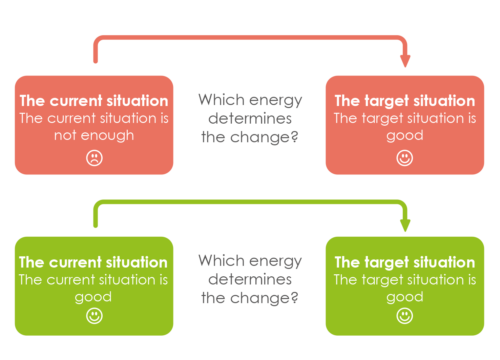
The paradoxical theory of change
Arnold Beisser, once a top athlete, then confined to bed and a wheelchair for a long time due to an illness, realised: “If you want to change something, you don’t have to change anything”. The so-called paradoxical theory of change entered into entrepreneurial transformation processes explains why so many change processes fail. When we announce to people that we want to make a change and put forward arguments for this, however good they may be, the message to the workforce is essentially this: You are not good enough. People usually react to this perception with resistance that is difficult to overcome. Those who seek to shape change in this deficit-oriented way are in the red, upper part of the diagram.
Change comes much easier when we build on strengths. What is currently good? What has put us in the situation where we have the freedom to influence our own destiny independently? When we come into contact with people in this way, the willingness to think about change is massively greater. Accordingly, we apply the lower, green part of the diagram in our transformation processes. Simple questions to bring transformations forward in this way can be:
Current situation
Transfer phase
Target situation
Experience shows: even in this way of shaping transformation, there is room for fears and resistance. They simply do not serve as a starting point for discussion. Rather, we explore with people what they can do themselves and thus strengthen self-efficacy. As a rule, the discussion about fears thus largely fades away.